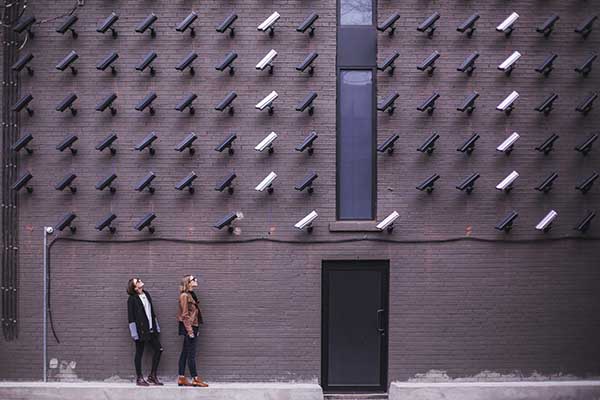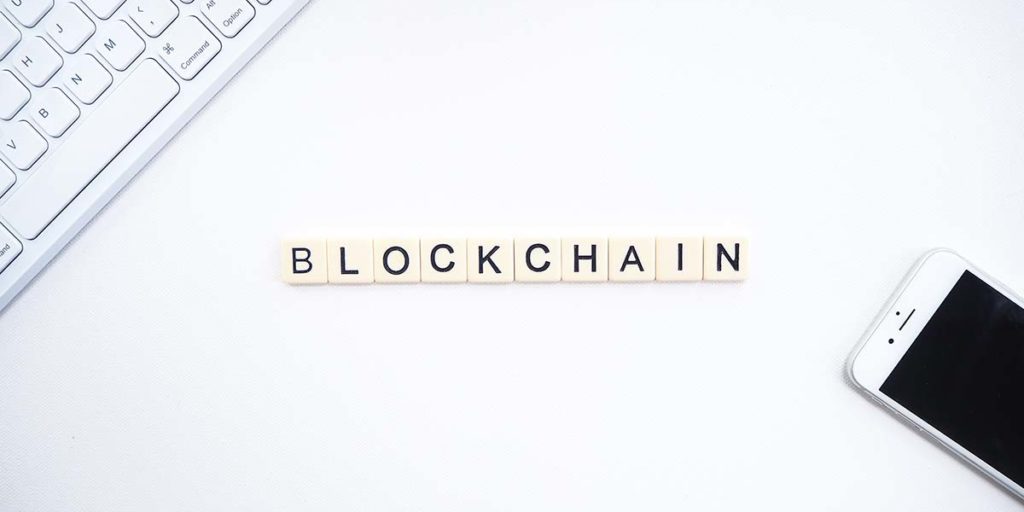In the last Crypto 101 Series, we explored what Bitcoin is and the many fascinating aspects of this digital cash. To truly understand what makes Bitcoins and other cryptocurrencies special, we must dive into the innovative technology that makes cryptocurrencies possible – blockchain.
The blockchain technology solves the double-spending problem that previously made digital currencies infeasible. More importantly, its application exceeds just finance. Blockchain is currently being applied in the field of voting, copyright protection, and more. In this article, we will explore the mechanism of blockchain and its valuable properties used to better our world.
What is a blockchain?
Simply put, a blockchain is a series of transaction history distributed throughout a network. The transaction history is stored in data blocks that are ordered based on time.
In the context of Bitcoin, blockchain is the complete transaction record of every single Bitcoin in existence.
Unlike traditional transaction records, blockchain is not managed by a central authority such as a bank or credit card company. The blockchain is duplicated and stored in every single computer within the Bitcoin network. This means that there are millions of copies of this blockchain and everyone who is a part of the Bitcoin network can see all the information stored in the blocks.
Blocks
Bitcoin blocks are bundles of transaction information compiled for record-keeping. Each block contains transaction details such as time, amount, sender’s public key and so on. Information stored in blocks is not changeable, making them permanent records.
Bitcoin mining – adding blocks to the blockchain
When new blocks are created, they are first verified by the network and then added onto the blockchain. Bitcoin mining refers to this process of compiling transaction information into blocks and attaching new blocks to the blockchain. The reason the process is called mining is that each time a new block is added, the miner will receive a few additional Bitcoins as a reward, similar to how miners are rewarded with gold and silver in a real mine. This financial incentive motivates miners to process transactions for the network.
With the high value of Bitcoins, mining seems like a great way to get rich quickly. However, it turns out adding a block to the blockchain is an extremely difficult task. In addition to validating and recording Bitcoin transactions, miners must also solve an incredibly difficult math problem. Solving the puzzle requires a lot of computational power, often that of thousands of computers. Only the first miner with the correct answer can add their block to the blockchain and receive the new Bitcoins.

The benefits of blockchain
If the technical details of blockchain seem too overwhelming, don’t worry. You don’t need to know how electricity works to appreciate its convenience. While it helps to understand the technical details of blockchain, it is even more important to know why people are obsessed with this technology. There are three major benefits of blockchain that are changing the world we live in.
Benefit one – decentralization
Until blockchain, all ownership and transaction ledgers are stored and managed by a central authority. For example, your bank account balance is managed by a commercial bank and the title of your house is recorded by the local government. Many other aspects of our daily lives rely on centralized ledgers including healthcare records, voting, copyright, and more.
Centralized ledgers have served us well, but it has a few drawbacks. The third-party agencies and authorities have total control over the systems. These authorities can affect changes single-handedly. Additionally, centralization can lead to a single point of failure. For example, when the credit card company’s website is down, you won’t be able to access it to pay your bills.
On the flip side, blockchain is decentralized. No central authority controls it and decisions are made collectively by all network participants. Moreover, the network doesn’t rely on any single participant. The transaction record is stored and maintained by millions of miners. When some miners go offline, others still can still support the network.

Benefit two – security
Blockchain also has superior security. Traditionally, ownership records such as your bank account balance are centrally managed by your bank. This creates a single target for hacking. A security breach could create millions of victims. On the other hand, in order to hack a blockchain, the hacker must hack millions of computers.
The security of a blockchain network relies on the incredibly difficult mathematical problem the miners must solve in the mining process. As described above, to add a block to the blockchain the miner needs to first solve an incredibly difficult math problem. Because the solution to the problem is unpredictable, the miner needs to test out different cases to get the right answer. Thus, solving the problem depends on a miner’s computational power.
To hack the Bitcoin network, the hackers will attempt to pass fake transactions as genuine ones. For the transactions to be acknowledged and validated, the hackers must compile them into a block and attach it to the blockchain. However, like every other Bitcoin miner, the hackers must solve the mathematical challenge before adding the block to the blockchain.
While the hacker is solving the mathematical problem to add the fake block, the rest of the network is working on adding genuine blocks to the blockchain. This creates a fork in the blockchain with two sub-chains: one valid and one created by the hackers. In the case of a fork in the blockchain, the network will accept the longest chain as valid.
Consequently, to realize their attack, hackers must add fake blocks at a speed faster than the rest of the blockchain network combined.
This requires an enormous amount of computational power, impossible for a single person to control. It creates a strong barrier that protects the blockchain from being hacked.
The 51% attack.
Theoretically, a blockchain network could be hacked when more than 50% of the miners turned against the network. When the hackers control the majority of the computational power in the network, they can consistently solve the puzzle before anyone else and thus adding “fake” blocks on the blockchain. This majority attack is called the 51% attack. While theoretically possible, this attack is extremely difficult to pull off. In fact, the network becomes more secure as it becomes more popular with a large number of miners supporting the network.
Hacking on the user end
Now, you might wonder if blockchain is so secure why are there still news headlines on Bitcoin hackings? The nuance here is that while hacking a blockchain network is hard, stealing individual users’ private keys is relatively easy.
The recent hackings targeted the Bitcoin exchanges to steal user and wallet information. These hacks are not directly against the Bitcoin network. Instead, the hackers target Bitcoin exchanges and their databases. Thus, while blockchain itself is secure, how each person protects their private key affects their vulnerability against hacking.
Benefit three – transparency and privacy
Bitcoin has a strong appeal to users who value their privacy. Bitcoin ownership contains two sequences of numbers: the public key and the private key. The public key is the address people use to receive Bitcoin transfers. The private key is used to spend your Bitcoins.
Unlike traditional financial accounts, Bitcoin keys don’t have to be associated with your identity if you don’t want them to. Bitcoin transactions contain only your public address, not your name or other identifiable personal information. This creates a veil between your transactions and identity.

Yet, this privacy is compromised when you use a cryptocurrency exchange as you need to provide personal information during registration. Additionally, there are methods to track down Bitcoin users using web data and cookies. While one can take additional measures to increase anonymity, Bitcoin’s privacy is an enhanced feature over traditional banking but not an absolute guarantee.
Building on top of the separation of identities and transactions, blockchain also enables transparency in transaction history on an unprecedented level. Traditional financial networks operate on secrecy. Transaction history is heavily guarded to protect personal information. In contrast, details of every single Bitcoin transaction is available on the blockchain with precise time, amount, and the participant’s public address.
The implication of this transparency is significant. For example, most public companies now report their financials quarterly or annually. However, the numbers are only verified by third-party accounting firms. With blockchain, the public can verify each expense and transaction in real-time. Moreover, the high degree of security provided by the blockchain makes it impossible to tamper with the numbers. A blockchain-based financial reporting system can give the shareholders more monitoring power and leaves less room for inaccurate reporting, greatly increasing accountability.
Applications of the blockchain technology
The blockchain technology is developing at a fast pace. Armies of entrepreneurs and programmers are working on blockchain applications in various fields. While we are yet to realize the full potential of this technology, some blockchain applications already show a lot of promise in various fields.
Finance
Finance is a major field for blockchain innovations. Decentralization, privacy, transparency, and security are all crucial to financial institutions. The industry is highly centralized with banks and investment firms who centrally manage records and facilitate transactions. While they strive for transparency and security, these firms have often failed to do so with frequent attacks and leaks of user information.
Blockchain can improve many aspects of banking, from Know Your Customer (KYC) to trade finance.
Smart contracts
Because transactions on blockchains are essentially computer codes, these codes can be programmed to represents more complicated transactions with additional rules. These advanced computer programs are smart contracts.
Traditionally, contracts are enforced manually with the help of independent third parties. Smart contracts, on the other hand, can enforce themselves and trigger different actions based on pre-agreed conditions. For example, you can have a future contract that automatically settles the trade at expiry dates. Or even a smart trust fund that releases the fund to the beneficiary after they reach a certain age. More complicated codes can represent complex contracts that involved multiple conditions and calculations. Smart contracts not only reduce costs but also increase the efficiency of previously manual transactions.

Governance
Increasing government accountability has been the focus of lawmakers. Government finances and spending are a crucial component of accountability. Many governments issue periodic reports to inform the public of their financial health but this process doesn’t happen in real-time and information is not easily verifiable. Blockchain transactions could greatly increase transparency by making government spending trackable in real-time.
Another promising application of blockchain in governance is blockchain voting. In a simplified version of a blockchain voting system, each voter would receive a voter ID verified through their local government. The smart contract is designed to allow each voter to cast one vote, containing the voter’s public key and his or her vote. The vote is recorded on a blockchain. Only the governments have a database that can connect a voter’s name to his or her public key, protecting voters’ privacy.
Because blockchain uses a decentralized ledger, every voter has a copy of the entire voting history, making the voting process completely transparent. Auditing the result is effortless. No more manual recounts that take hours or even days.
With the entire voting record available, government and third-party auditors can verify the result in seconds.
Some countries and municipalities have already adopted blockchain voting. Sierra Leone hosted its presidential election on blockchain in 2018, first of its kind in the world.
Intellectual property management
The application of blockchain in copyright is equally exciting. Protecting their intellectual property is a crucial yet challenging step for many creators. For scientists and innovators, registering an IP is lengthy and costly, slowing down the steps of bringing products to market. For artists, copyrights are granted automatically at the time of publication. Copyright disputes still frequently occur, however, as there is not always a way to verify the first publication date.
A blockchain-based copyright framework will dramatically improve the current process. The creators can upload their product (PDF, computer source code, or illustrations) to a blockchain. The files will be added to the blockchain along with a timestamp. Blockchain’s immutable record helps the creators prove their copyright and settle disputes. This operation is also inexpensive, reducing the legal and financial burden on the creators and thus making copyright protection available to more people.
The application of smart contracts can enhance IP management further. For example, the smart contracts embedded in blockchain can automatically detect if an image or invention has already been registered and decline false and repeated claims. In addition, royalty payments can be automated through smart contracts, allowing creators to be paid directly in real-time.
Disrupting the future
Blockchain is a powerful technology and its potentials to change the world is profound. Its application can improve any system that requires high levels of security but currently relies on a central party to manage records.
Moreover, the integration of smart contracts gives blockchain applications additional benefits of automation and artificial intelligence. With thousands of brilliant minds exploring new products, blockchain is likely to transform many aspects of our lives in the near future.




